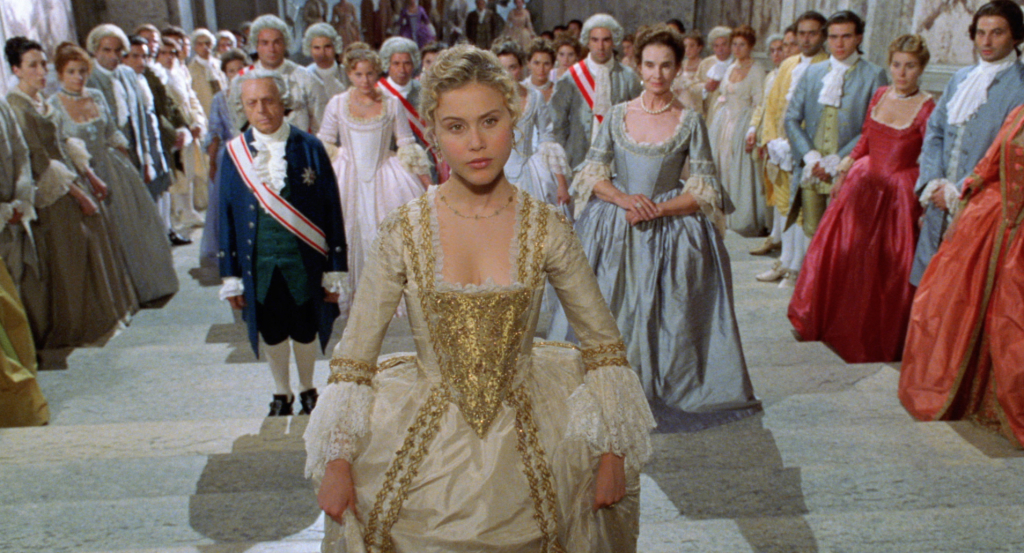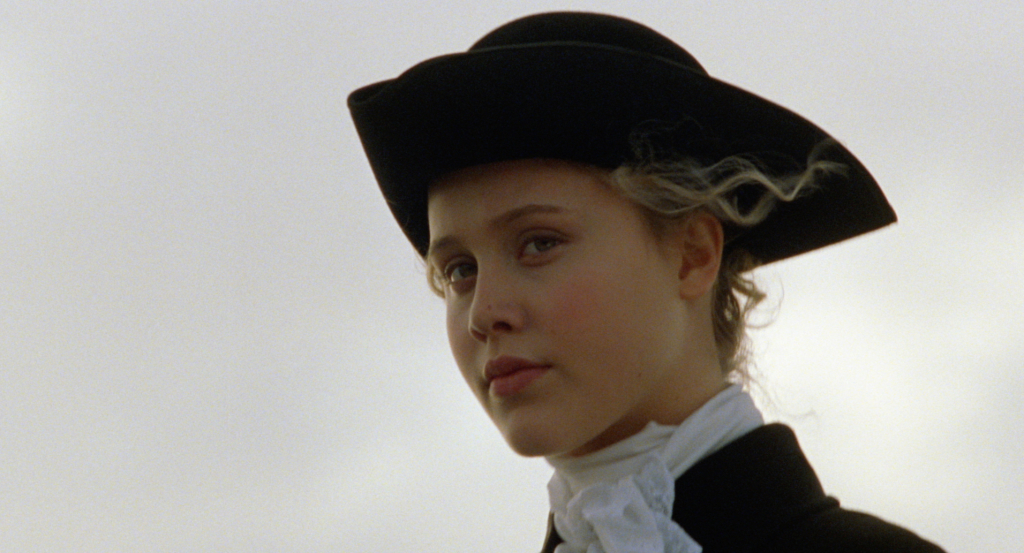Debuting twenty years ago,
Ferdinando e Carolina is yet another historical drama that had the potential to be masterpiece but caved in to trashiness and so was ruined. It is a shame since the sets are ravishing, the views of Naples and the gardens of Caserta are stunning, and the acting has potential.
Sergio Assisi and
Gabriella Pession are saucy and hilarious as King Ferdinand I and Queen Maria Carolina of Naples and would have been amazing with a better script. But the crude humor, rough language and the denigration of the monarchical principle, all made for a mere farce, without tapping the deeper aspects of the story. Produced by Lina Wertmüller,
Ferdinando e Carolina could almost have been the inspiration for Coppola's 2006
Marie-Antoinette, both films being shallow studies of young royals. In Wertmüller's 1999 film the heroine is Marie-Antoinette's favorite sister, Maria Carolina, who must also marry a Bourbon prince who has bad manners and loves hunting. But otherwise Louis and Ferdinando were immensely different.
From
The Chicago Reader:
Lina Wertmüller's comic biopic (1999) about King Ferdinando I of Naples
is characteristically over-stylized, with plenty of effects (zooms,
colored lighting, circular camera movements) that catch the eye but add
little to one's understanding of the story. The movie is also
characteristically vulgar, focusing on the king's naughty pranks, sexual
escapades, and gastrointestinal problems at the expense of the
political and historical contexts in which he lived. Like many of
Wertmüller's films, this depicts most interpersonal relationships as
struggles for sex and emotional control. Her Ferdinando is a horny,
pampered brat who abuses his privilege to get what he wants, and
Wertmüller presents this smug caricature as if she were revealing some
shocking truth about monarchical power. As in many of her films, the
saving grace is Enrico Job's exquisite production design, which conveys a
sense of nuance and a historical curiosity lacking in the script and
direction.
The first part of the film deals with Ferdinando's ministers trying to get him to agree to a marriage with one of the daughters of Empress Maria Theresa of Austria. As the ministers chase the boy king through the woods and fields, the Empress is preparing her daughters for their dynastic roles. As the marriage with Ferdinando approaches, the daughter chosen to be his bride, Archduchess Johanna, dies of smallpox, to be followed in death by Archduchess Josepha, the next choice. The lot of Neapolitan consort then falls to Archduchess Maria Carolina, who is dragged away in hysterics by her mother the Empress, as her younger sister Marie-Antoinette clings to her skirts.The scenes are portrayed in the manner of
un vaudeville when in reality it was extremely tragic for the Habsburg family to bury so many children. Plus Maria Carolina had to be sent to Naples instead of to France as planned. Marie-Antoinette was then sent to France while too young. But the film does not go into any of the dynastic repercussions.
The second part of the film shows how Maria Carolina quickly gains ascendancy over her husband, so much so that his conservative ministers fear her influence. Maria Carolina, being an advocate of freemasonry, is feared to be too liberal and so the minsters, including a priest, try to distract the king from his wife by another lady. At one point the Queen appears to be with child, but they never show the baby, who would have been the lovely Maria Theresa, last Holy Roman Empress. The conception of their first son is mentioned, but no baby appears in the film. None of the couple's eighteen children are in the movie, except in a glimpse of the famous Kauffman portrait. I would love to have seen more of Ferdinando and Carolina with their family, but for that there is the brief scene in
That Hamilton Woman. The Catholic religion is reduced to rank superstition in most of the film, especially on the part of the King of Naples, and similarly the monarch himself is depicted as a buffoon, which is how the revolutionaries, then as now, love to portray all Christian rulers.
 |
| The Habsurgs at Home |
 |
| Maria Carolina of Austria arrives at Caserta |
 |
| The Wedding Night |
 |
| The Real Royal Family of Naples |
Share






















No comments:
Post a Comment